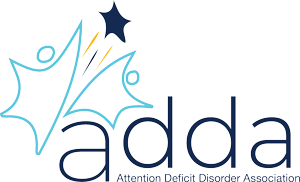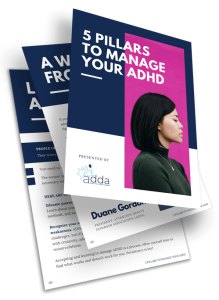
ADHD Combined Type: A Common and Treatable Diagnosis
Is staying focused at work or school a challenge—more so because you feel the need for constant motion?
If you relate to this, you may be living with combined type attention-deficit/hyperactivity disorder (ADHD).
There are three main types of ADHD:
- Predominantly inattentive ADHD (also known as ADHD-PI)
- Predominantly hyperactive/impulsive ADHD
- Combined type ADHD
Combined type ADHD is the least common. Based on recent research, the most prevalent type is predominantly inattentive ADHD, followed by predominantly hyperactive/impulsive ADHD.[1]
Any kind of adult ADHD diagnosis will likely lead to questions, and that’s perfectly normal.
Learning more about your unique mix of symptoms empowers you to seek the treatment and support you need.
We’ll cover what combined type ADHD looks like in everyday life and how you can manage it through medication and other approaches.
Originally published on December 20th, 2022, this article was updated and republished on September 6th, 2024.
What Is ADHD Combined Type?
Combined type ADHD, or mixed type ADHD, is a neurobehavioral condition that affects your brain and, in turn, your behavior. Combined type ADHD presents with both hyperactive-impulsive and inattentive symptoms.
The symptoms of ADHD are divided into two main categories: hyperactivity/impulsivity and inattention. Hyperactive-impulsive symptoms can include fidgeting, interrupting people, and impatience. Inattentive symptoms can include trouble focusing, inability to follow through on tasks, and poor time management.
If you experience symptoms in both categories, you may have combined type ADHD.
A diagnosis can be made based on the criteria outlined by the Diagnostic and Statistical Manual of Mental Disorders, Fifth Edition (DSM-5)—a guide that helps healthcare professionals classify and diagnose mental health disorders accurately.
According to the DSM-5 criteria, you may be diagnosed with combined type ADHD if all of the following are met:[2]
- Five or more symptoms of inattention for at least 6 months
- Five or more symptoms of hyperactivity/impulsivity for at least 6 months
- Symptoms interfere with your performance at work or school
- Symptoms are present in two or more settings, such as at work, school, or home
- Other mental health disorders, such as anxiety or depression, cannot better explain your symptoms
- Some symptoms were present before the age of 12
Having combined type ADHD does not mean that your ADHD is more severe.
Instead, the severity of your ADHD depends more on the rating (mild, moderate, or severe) given by your specialist.
Like other types of ADHD, combined type ADHD can be categorized into different severity levels, which are:[2]
- Mild: Few symptoms are present other than the ones needed to meet the minimum diagnostic criteria. ADHD-related impairment is minimal.
- Moderate: The number of dominant symptoms and degree of impairment lies between “mild” and “severe.”
- Severe: There are many symptoms present, or a few that are particularly severe. Your ADHD symptoms are serious enough to cause significant trouble at work, school, or in social settings.
If you want to know more about ADHD types and talk to people who actually understand you, join ADDA+. It’s a community of individuals just like you who want to share knowledge, swap stories, and learn.

Signs and Symptoms of Combined Type ADHD in Adults
Adults have to display symptoms of inattention and hyperactivity/impulsivity in a combined ADHD presentation.
All types of ADHD have a range of symptoms and different intensities. If you have combined type ADHD, you might experience some (or all) of the symptoms in the lists below. You may also notice that some are more prominent than others.
Inattentive Symptoms
Based on the DSM-5, the nine symptoms of inattention in ADHD include:[2]
- Difficulty focusing on tasks
- Inability to follow through with instructions and complete tasks
- Getting distracted by unrelated thoughts
- Making careless mistakes and overlooking important details
- Difficulty listening when spoken to
- Unable to organize tasks and manage time
- Hesitating to take on tasks that require sustained focus
- Losing important items
- Forgetfulness (missing events, meetings, or deadlines)
Hyperactive-Impulsive Symptoms
The DSM-5 has also outlined the symptoms of hyperactivity and impulsivity in ADHD. They include:[2]
- Fidgeting, tapping your hands and feet, or moving in your seat
- Unable to stay seated
- Feeling restless
- Struggling to stay quiet while participating in activities
- Constantly “on the go” and hard to keep up with
- Talking excessively
- Interrupting others and having trouble waiting your turn in conversations
- Getting impatient when waiting your turn or standing in line
- Intruding on other people’s conversations and activities
Learning about the symptoms can help you separate what’s part of your personality and what’s actually due to your ADHD.
It’s an opportunity to view yourself in a new light –and form better strategies to overcome challenges.
How Combined Type ADHD Is Diagnosed
Both adults and children can be diagnosed with combined type ADHD. Often, this process starts with a visit to a family doctor, who will assess your symptoms.
Sometimes, a primary care provider, like your GP, can diagnose ADHD. However, it’s not unusual for them to refer you to a specialist with expertise in diagnosing and treating adult ADHD. These mental health specialists will likely have more training and experience supporting adult ADHDers.
There’s no single test or method of diagnosing combined-type ADHD. During this process, your doctor will ask about your symptoms and how they affect your daily activities and relationships. They may also use a rating scale, which is a questionnaire that assesses the frequency and severity of your symptoms.
Additionally, they could ask to speak to someone who was close to you as a child, like a parent or teacher. This will help them understand whether you experienced ADHD symptoms as a child.
Once they have the information they need, they can make a more accurate diagnosis.
You may be diagnosed with combined type ADHD if you experience both symptoms of inattention and hyperactivity or impulsivity. These include lack of focus, restlessness, poor memory, and being unable to wait your turn. [3]
It can feel daunting to reach out and seek a diagnosis. That said, many adult ADHDers who receive a diagnosis find it to be a huge step in the right direction since this provides an explanation for their struggles and allows them to get the help they need.

What Increases Your Risk of Combined Type ADHD?
You might have heard that ADHD is linked to poor parenting. Another common belief is that consuming too many sugary foods can lead to ADHD. These are myths and are not proven by science.
What research has found is that one of the biggest risk factors for combined type ADHD is genetics. This means that it can run in the family. If you have a parent, sibling, or blood relative with the condition, you’re more likely to develop it yourself.[4]
There are some other possible risk factors for ADHD, which include premature birth and having a disease as a newborn.[4]
Based on these risk factors, there’s no known way to prevent ADHD from developing in children. That said, it’s a highly treatable condition that can be managed with a mix of medication and ADHD therapy.
Treatment for Combined Type ADHD
While there’s no cure for ADHD, treatment is readily available – and often effective enough to help you thrive and succeed.
Treatment for combined type ADHD usually involves both medication and behavioral therapy and targets symptoms of inattention and hyperactivity/impulsivity.
Your specialist may prescribe any of the following medications to treat your symptoms:[5]
- Stimulant medications: These are usually the first choice for treating any type of ADHD because they’re effective for most people. Stimulant medications help increase chemical messengers (neurotransmitters) in your brain and regulate brain activity.
- Non-stimulant medications: If you do not respond well to stimulant medications or cannot tolerate their side effects, your doctor might recommend non-stimulant medications instead.
Some non-drug management options for combined-type ADHD in adults include:
- Cognitive behavioral therapy (CBT): CBT helps you recognize, address, and change habits and thinking patterns that prevent you from achieving your goals. This therapy can help you improve your organization, planning, focus, time management, and problem-solving skills.[6]
- Mindfulness therapy: Mindfulness-based techniques can help reduce mind-wandering and distractability, enhance attention, and regulate emotions.[7]
- ADHD support groups: Support groups connect you to people with ADHD, giving you access to helpful advice, encouragement, and comfort from those who understand your struggles. ADDA’s Online Support Group for Beginners is a fantastic place to grow, learn, and journey alongside people who have walked in your shoes.
- ADHD coaching: An ADHD coach works with you to create structures and strategies that help you stay on track, manage your commitments, and hone valuable skills like organization and time management.
Getting the right support and treatment can be life-changing. So, it’s best to get a proper diagnosis from a trained professional, preferably a specialist with experience with adult ADHD.

Combined Type ADHD Is Common and Treatable
Combined type ADHD can be trickier to manage due to its wide range of possible symptoms. But don’t be discouraged by the label on your diagnosis. It isn’t necessarily more severe or disruptive than other types of ADHD.
Keep in mind that treatment and support are readily available.
Your doctor will work with you to find the best course of action based on your symptoms and treatment goals. And with the right advice and support, you’ll set yourself up for success in your work, school, and relationships.
If you’re concerned that you may have ADHD, you can take ADDA’s ADHD test. This questionnaire helps you recognize the signs of ADHD and determine the best next steps to take.
A proper diagnosis is a step in the right direction to living your life to its fullest!
References
[1] Ayano, G., Tsegay, L., Gizachew, Y., Necho, M., Yohannes, K., Abraha, M., Demelash, S., Anbesaw, T., & Alati, R. (2023). Prevalence of attention deficit hyperactivity disorder in adults: Umbrella review of evidence generated across the globe. Psychiatry research, 328, 115449. https://doi.org/10.1016/j.psychres.2023.115449
[2] Cabral, M. D. I., Liu, S., & Soares, N. (2020). Attention-deficit/hyperactivity disorder: diagnostic criteria, epidemiology, risk factors and evaluation in youth. Translational pediatrics, 9(Suppl 1), S104–S113. https://doi.org/10.21037/tp.2019.09.08
[3] de la Peña, I. C., Pan, M. C., Thai, C. G., & Alisso, T. (2020). Attention-Deficit/Hyperactivity Disorder Predominantly Inattentive Subtype/Presentation: Research Progress and Translational Studies. Brain sciences, 10(5), 292. https://doi.org/10.3390/brainsci10050292
[4] Faraone, S. V., & Larsson, H. (2019). Genetics of attention deficit hyperactivity disorder. Molecular psychiatry, 24(4), 562–575. https://doi.org/10.1038/s41380-018-0070-0
[5] Nazarova, V. A., Sokolov, A. V., Chubarev, V. N., Tarasov, V. V., & Schiöth, H. B. (2022). Treatment of ADHD: Drugs, psychological therapies, devices, complementary and alternative methods as well as the trends in clinical trials. Frontiers in pharmacology, 13, 1066988. https://doi.org/10.3389/fphar.2022.1066988
[6] William, S., Horrocks, M., Richmond, J., Hall, C. L., & French, B. (2024). Experience of CBT in adults with ADHD: a mixed methods study. Frontiers in psychiatry, 15, 1341624. https://doi.org/10.3389/fpsyt.2024.1341624
[7] Bachmann, K., Lam, A. P., & Philipsen, A. (2016). Mindfulness-Based Cognitive Therapy and the Adult ADHD Brain: A Neuropsychotherapeutic Perspective. Frontiers in psychiatry, 7, 117. https://doi.org/10.3389/fpsyt.2016.00117






1 Comment
I appreciate your recommendation of these blogs because I am always searching for mental health care blogs. I’ve always been confused about mental health-related issues.